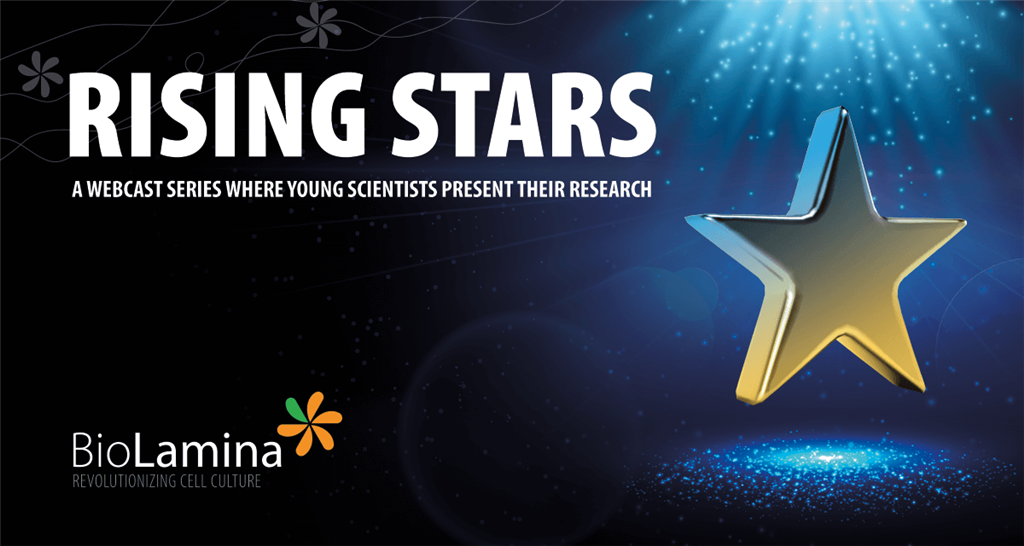
Human Embryonic Stem Cells for Treatment of Retinal Degeneration
2020-04-28
In this webcast, Sandra describes how she and her colleagues have paved the path for bringing hESC-derived retinal pigmented epithelial (PRE) cells to the clinic for patients suffering from age-related macular degeneration. They have generated a robust and scalable, xeno-free, and defined protocol to derive hESC-RPE cells that are functional but also safe, pure, and immunocompatible. Recently they have derived a GMP clinical grade pluripotent stem cell line that will be differentiated to hESC-RPE and used in a clinical trial in the coming years.
Contact Sandra via her LinkedIn profile
Link to Fredrik Lanner’s research lab
Functional characterization of human PSC-derived cortical networks differentiated on laminin-521 substrate: comparison to rat cortical cultures
2020-01-21
In this video, Tanja presents her recently published work on the defined differentiation of human pluripotent stem cell-derived cortical neurons on laminin isoform 521. Compared to rat cortical cultures, the hPSC-derived networks showed unique patterns of bursting activity. The hPSC-derived networks developed synchronous activity, recapitulating the classical cortical activity. Moreover, principal component analysis reflects the species-specific and maturation state differences between the two hPSC-derived and rat networks.
Contact Tanja via her LinkedIn profile
Link to Susanna Narkilahti’s research lab
Link to the article
Cellular therapy for burn/skin injuries
2019-12-11
The current expansion of autologous human keratinocytes to resurface severe wound defects still relies on murine feeder layer and calf serum in the cell culture system. Here, the authors report a completely xeno-free and defined culture system utilizing these laminins which enables robust expansion of adult human skin keratinocytes. The system is comparable to the 3T3-J2 co-culture system that may not only provide safer keratinocyte use in the clinics but also facilitate the broader use of other cultured human epithelial cells in regenerative medicine.
Contact Monica via her LinkedIn profile
Link to the article
Laminin 521 promotes quiescence in isolated stellate cells from rat liver
2019-01-11
Hepatic stellate cells (HSC) are liver-resident mesenchymal stem cells, critical for liver regeneration. In this webcast, Friederike Rohn present evidence that coating culture plates with Biolaminin 521, an important element of their niche in the space of Disse, improve hepatic stellate cell (HSC) adhesion and better preserved their retinoid stores as well as quiescence- and stem cell-associated phenotype.
Contact Friederike via her LinkedIn profile
Laminin 521 stabilizes the pluripotency expression pattern of human embryonic stem cells
2018-10-23
Here, Dr. Halima Albalushi describes the short-term effects of Biolaminin 521 on the expression of different genes in feeder-cell-derived hES cell lines after being transferred to and cultured on Biolaminin 521.
Contact Halima via her LinkedIn profile
Link to Nordfertil Research Lab
A switch in LAMB2 to LAMB1 isoforms during aging controls endothelial cell functions and enhances endothelial-to-mesenchymal transition
2018-05-31
Here, Ph.D. student Julian Wagner decipher the role of the microenvironment underlying the impairment of endothelial cell functions by aging. Mimicking age-related modulation of laminin β1 versus β2 chain expression changes the functional properties and phenotype of endothelial cells.
Contact Julian via his LinkedIn profile
Making blood from human pluripotent stem cells using laminins and hypoxic conditions
2018-05-01
Dr. Roger Rönn presents his research on how to make blood from human pluripotent stem cells using laminin and hypoxic conditions.
Contact Roger via his LinkedIn profile